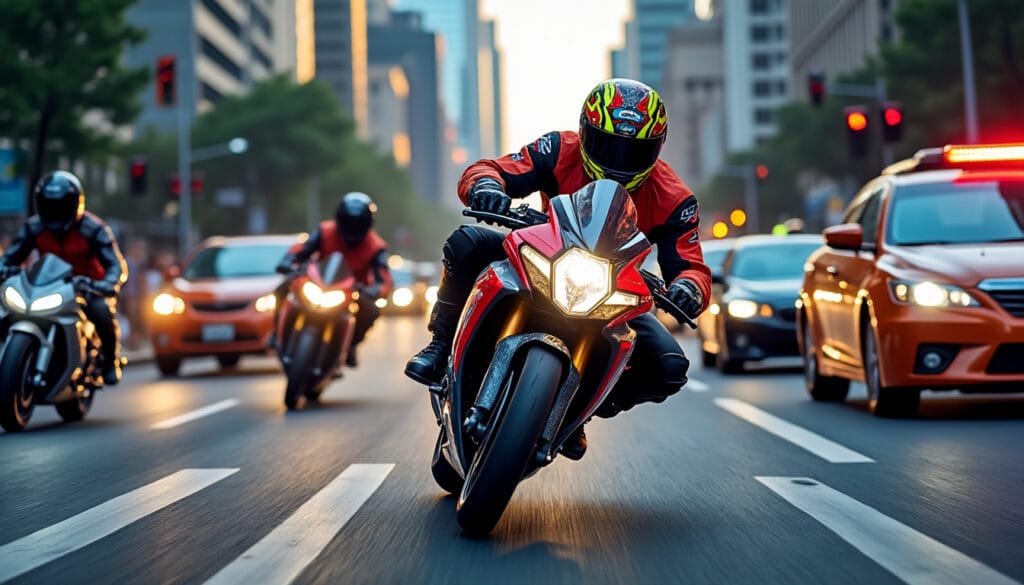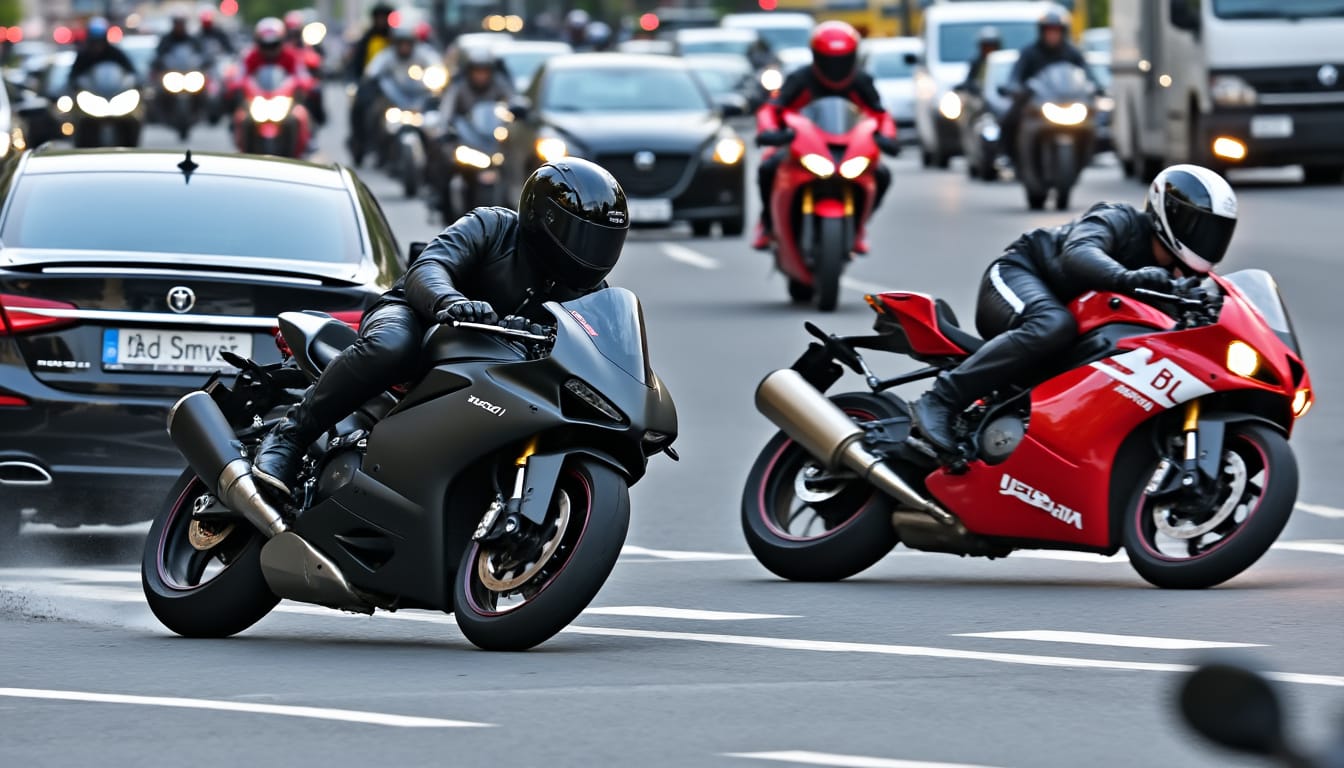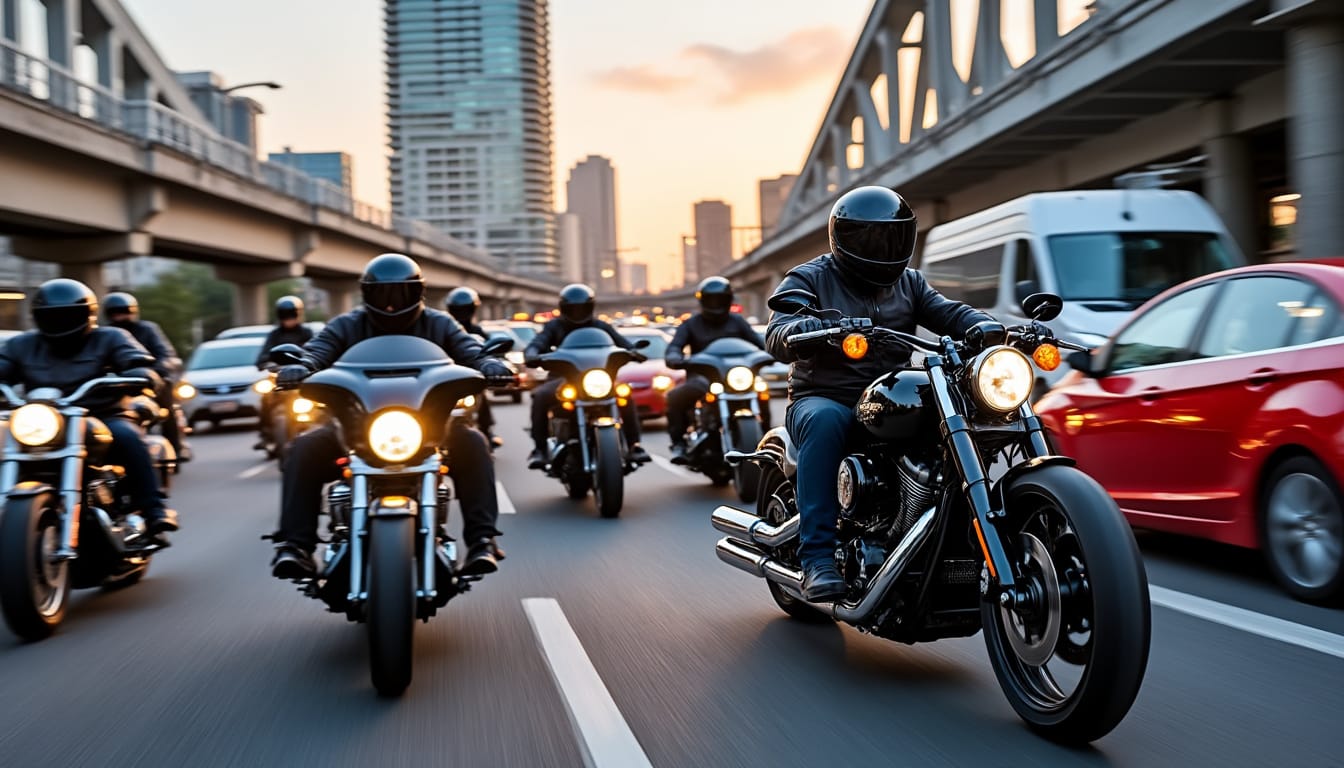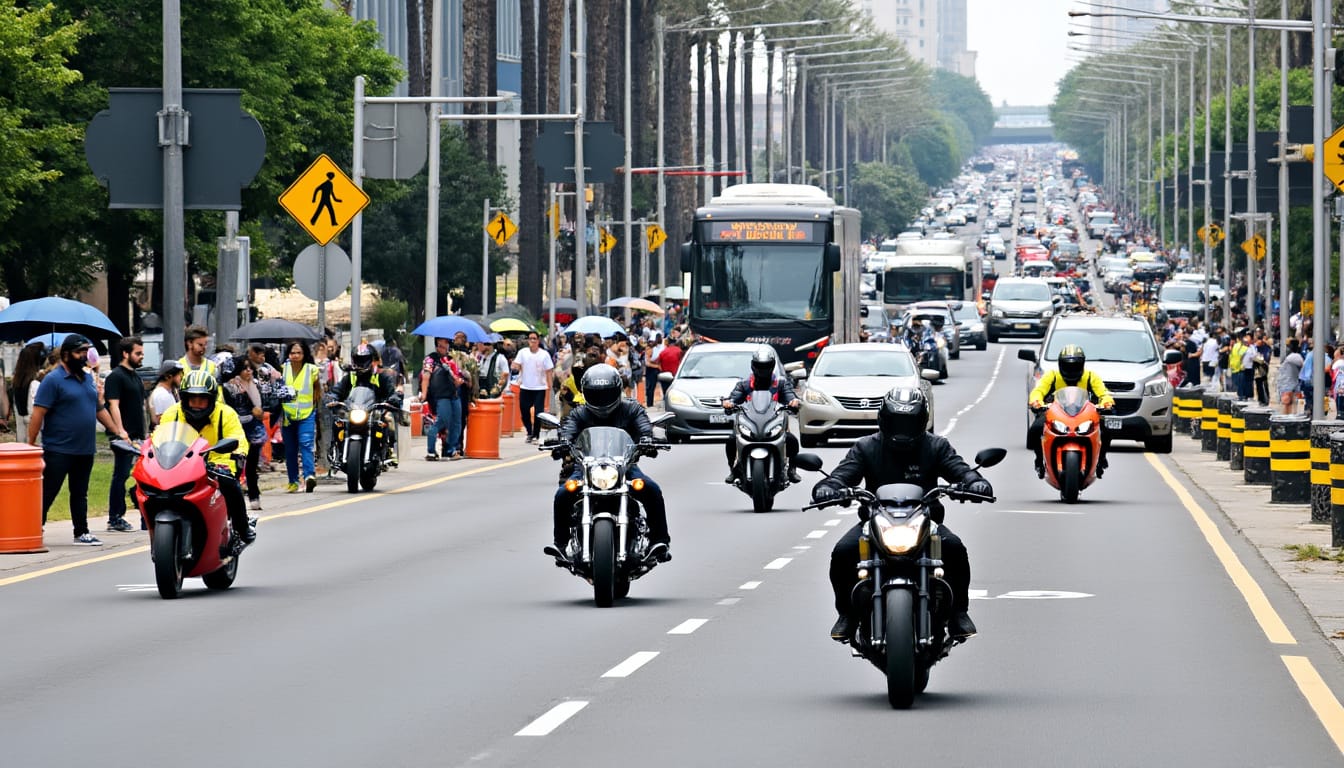Road regulations: motorcyclists allowed to weave between vehicles in traffic jams

Starting from January 11, 2025, a new regulation comes into effect in France, allowing motorcyclists and three-wheeler drivers to legally ride between lanes of vehicles during traffic jams on suitable roads and highways. A real advancement for the mobility of two-wheeled users, this measure aims to reduce travel times and ease traffic flow while raising safety and responsibility issues on the roads. How will this new legislation impact the habits of motorcyclists and other road users?
Legal Framework for Lane Splitting
Lane spliiting, commonly abbreviated as LS, is now integrated into the Road Code after several years of experiments conducted in various French departments. This device, initially tested between 2016 and 2021 in Île-de-France and several departments, revealed encouraging results in terms of road safety. The government's wish is to regulate a widely practiced behavior to ensure the safety of motorcyclists and car drivers.

Characteristics of Lane Splitting
To allow motorcyclists to ride between lanes, several conditions must be met:
- The circulation must take place on roads with two lanes or more, separated by a central reservation.
- The maximum authorized speed must be 70 km/h or more.
- Motorcyclists may only ride between lanes on the left when vehicles are stopped or moving slowly.
- Motorcyclists must not exceed 50 km/h, and this limit is reduced to 30 km/h in case of traffic jams.
This regulation injects a clear legal framework for the circulation of two-wheelers. The revision of the Road Code also includes precise measures concerning behaviors to adopt to minimize accident risks. Moreover, it is important that motorcyclists signal their intention to maneuver using their turn signals, thereby enhancing predictability on the road.
Safety and Awareness Issues
Despite the obvious advantages of LS, implementing this measure creates an urgent need for awareness and training. Recent studies show that many motorcyclists do not respect speed limits. Indeed, a majority of them often exceed the maximum authorized speed of 50 km/h when riding in a lane-splitting situation. This situation calls for increased vigilance and awareness strategies.
| Type of Offense | Penalty |
|---|---|
| Exceeding the speed limit | Fine of 135 euros and deduction of 3 points |
| Failure to comply with circulation conditions | Fine of 135 euros |
Law enforcement will have the ability to observe offenses from a distance, which could transform the way regulations are enforced. The delegation for road safety has established partnerships with various motorcyclist associations, such as the French Federation of Angry Motorcyclists (FFMC), to ensure that the rules are not only known but also integrated into the education of young drivers.
Impact on Urban Mobility
In a context where French cities suffer from increasing congestion, lane splitting could play a crucial role in improving overall traffic flow. By allowing motorcyclists to navigate between lanes of cars, this new regulation helps to reduce traffic jams while contributing to a better distribution of traffic during peak hours. This could also encourage more motorcyclists to use their two-wheeled vehicles, thus decreasing the use of individual cars.

Advantages of Lane Splitting for Drivers
Lane splitting offers various notable advantages for two-wheeled drivers. Among these benefits, we can mention:
- Reduction in travel times: Motorcyclists can save valuable time by avoiding being stuck in traffic jams.
- Promotion of soft mobility: Encouraging the use of two-wheelers helps to reduce urban pollution.
- Improvement of road safety: By removing motorcycles from dense traffic flow, this can reduce the risks of accidents involving heavy vehicles.
This dynamic aligns with initiatives taken by local authorities to encourage alternative modes of transport, particularly in the context of urban traffic circulation. Urban mobility policies often struggle with the predominance of automobiles, and the practice of lane splitting represents a step forward to balance this dynamic.
The Roles of Road Actors
In this new configuration, adherence to driving rules is essential. Motorcyclists, just like car drivers, must play an active role in road safety. Furthermore, the involvement of police prefectures and collectives like the Association of Motorcyclists of France is crucial to ensure that information flows well and that regulations are accepted by all road users.
| Road Actors | Roles |
|---|---|
| Motorcyclists | Respect speed limits and signal their maneuvers |
| Car drivers | Be vigilant and avoid sudden lane changes |
| Law enforcement | Monitor and enforce lane splitting rules |
Feedback on Experiments
The experiments conducted in pilot areas such as Île-de-France have gathered data on road user behaviors, as well as the effectiveness of lane splitting. Although some reluctance remains among drivers of other vehicles, the results of the experiments indicate that lane splitting can be done under safe conditions.
Analysis of Safety Data
Incidents involving motorcyclists riding between lanes were examined during the experimentation periods. It was found that the accident rate remained relatively stable. This data is of vital importance to justify the integration of lane splitting into the Road Code.
- Accidents due to lane splitting: stable percentage over time
- Average speed of motorcyclists in lane splitting: between 30 and 50 km/h
- Driver perception after the experiment: 70% agree on positive regulation
This public approval is crucial to strengthen the legitimacy of the measure and encourage widespread acceptance of this practice. However, the *French Federation of Angry Motorcyclists* emphasizes the importance of maintaining regular information sessions to update rules and address concerns of motorcyclists and other road users.
The Goals of Road Safety
The implementation of lane splitting comes with a tangible goal: to reduce the number of road accidents while ensuring smoother traffic. Motorcycle enthusiasts, particularly in urban areas, must adopt responsible behavior. Road safety revolves around these values, seeking to educate and evolve the mindsets of users.
| Goal | Associated Measure |
|---|---|
| Reduce travel time | Lane splitting |
| Increase motorcyclist safety | Awareness for road users |
| Encourage responsible riding | Education in driving schools |
Future Perspectives for Motorcyclists in France
In an era where traffic regulations are rapidly evolving to adapt to user needs, lane splitting represents a significant turning point in the use of two-wheelers in France. The coming days will test the various measures adopted, in a context where road safety remains a major issue.

Role of Authorities in Regulation
The success of this legislation also relies on the willingness of local and national authorities to ensure a respectful framework for road users. Authorities must continue to monitor the effects of lane splitting, both on safety and traffic flow. Accident assessment results must be shared and adapted to the realities of motorcyclists.
Education and Awareness
Education sessions on road safety should become accessible to all motorcyclists. Time spent in training is often the key to integrating best practices. Driving schools must include modules dedicated to lane splitting in their training programs, so that the next generation of motorcyclists is well prepared.
By combining strict regulation and awareness, France could become a model for other countries in terms of legislation on the circulation of two-wheelers. Departments must plan communication campaigns to remind users of safety issues and obligations related to lane splitting.
Leave a Reply


Articles relatifs